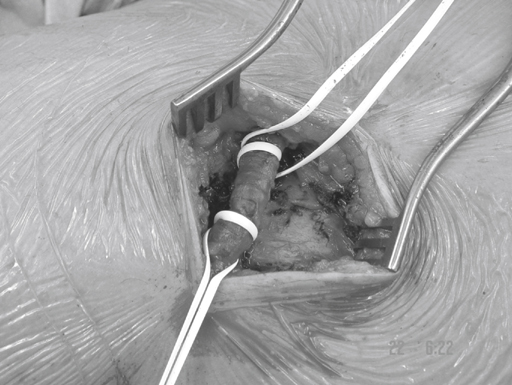Local anesthesia is administered and a length of about 5 to 10 cm of graft is exposed. Double-looped umbilical tape or vessel loops are placed at either end for hemostasis during the procedure (Figure 1). Rubber-lined Fogarty hydrogrip clamps should also be available for graft hemostasis. The patient is then systemically anticoagulated, usually to achieve an activated clotting time of longer than 250 seconds.
Operative Thrombectomy for Acute Thrombosis of Lower Extremity Bypass Grafts
Technique
![]()
Stay updated, free articles. Join our Telegram channel

Full access? Get Clinical Tree


Thoracic Key
Fastest Thoracic Insight Engine

